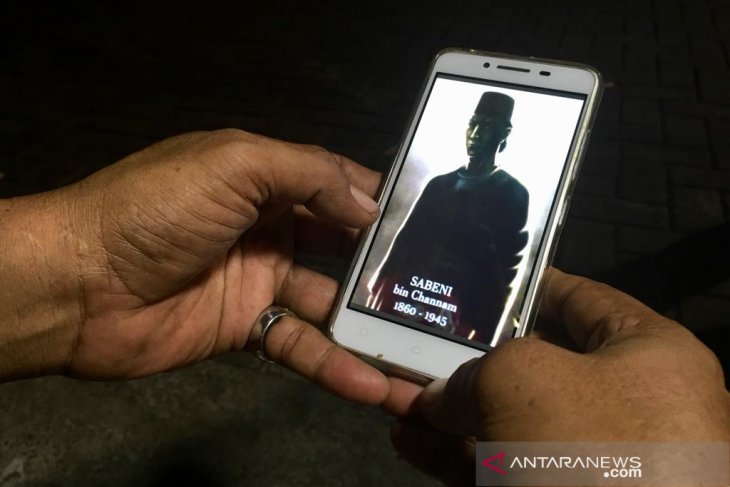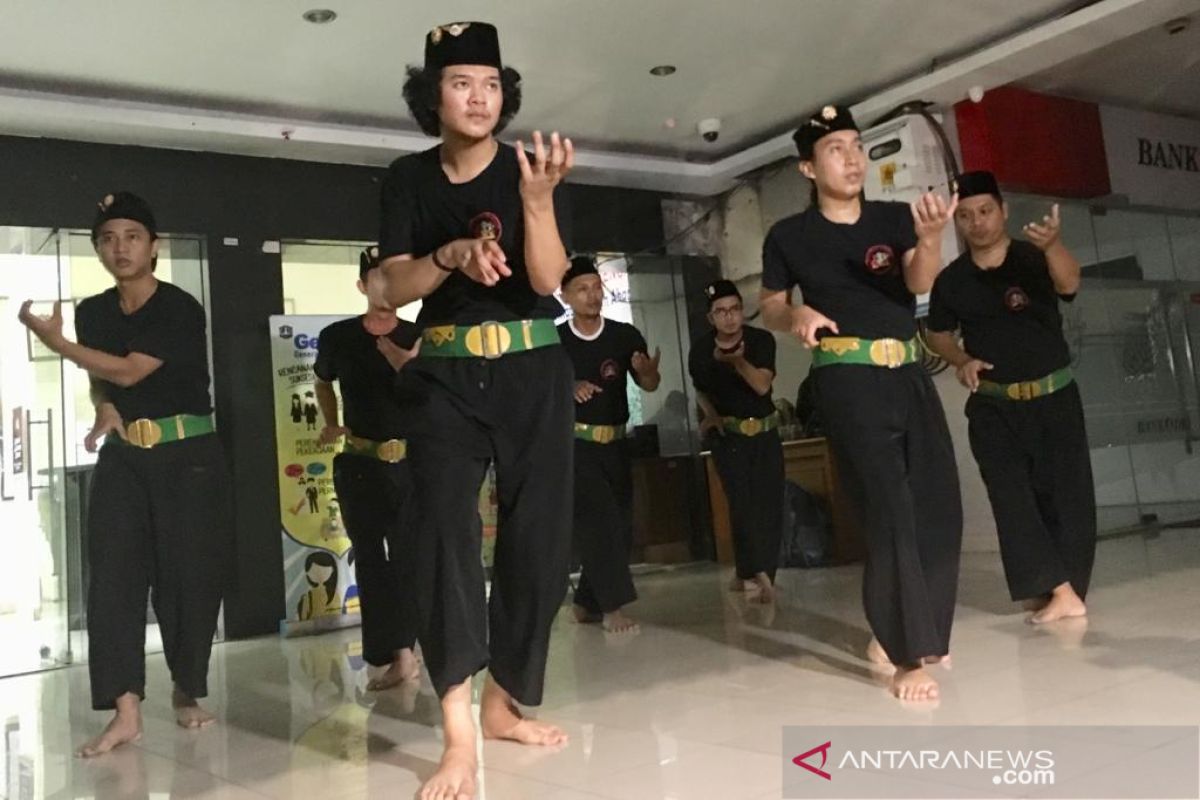They shot him at close range. Bang bang! However, surprisingly, nothing happened to him, and he was aliveJakarta (ANTARA) - Sabeni can solely be identified through a black-and-white portrait painting, bearing Sabeni bin Channam 1860-1945, though it sounds too powerful to forget owing to being perpetuated as a street name in Tanah Abang, Central Jakarta.
People also frequently affixed "Betawi fighter" to the name, thereby referring to Sabeni as one of the prominent fighters, who lived in the old Jakarta of the colonial era, from the time when the Dutch to Japan ruled in Indonesia.
Zul Bachtiar, 58, did not even get the opportunity to meet Sabeni, his grandfather. However, the family stories he had heard enabled him to fluently tell stories of how Sabeni led his life.
Sabeni is considered a native of Tanah Abang, or Tenabang, whilst a version claims him to be a Pakistani descendant from parents of Channam, identified as a Pakistani name, and Mak Jati, most likely a local woman's name.
It was told that Sabeni learned silat, a traditional martial arts form, from three masters named Haji Suhud, Haji Ismail, and Sayyid Alwi Al-Habsyi, of which the last specifically guided him on spiritual matters.
Hereupon, Sabeni gained mastery in both silat and spiritual skills.
"He was not only intense in physical movements, such as the silat style, but was also great in mind, planning strategies, and acting spiritually," Bachtiar noted.
Achieving his own most eminent ability and style in silat, Sabeni was allowed by the three masters to name the martial art he possessed after his name which from then on was known as the Silat Sabeni.
Sabeni also used his silat technique to propose a woman by fighting with her father, another Betawi fighter of Macan Kemayoran -- the Tiger of Kemayoran -- who supposedly was Murtado, and managed to emerge victorious in the fight.
The master began to teach silat from village-to-village while simultaneously disguising himself as an Islamic teacher to recite Quran for the children.
He gained some followers, both of silat and reciting Quran, which was interpreted by the Dutch colonial regime administrative as a threat since during those times, the people were banned from assembling to avoid any uprising movement.
Since Sabeni did not follow the rules, the Dutch government attempted to stop his circle of fighters by attacking his house in order to arrest and detain him.
"At the very first attempt, the Dutch troops were looking for Sabeni at his house but ended up with not being able to find him anywhere, when in fact, he was eating there, yet invisible to the people, as he was using his spiritual ability to remain unseen," Bachtiar explained.

"They shot him at close range. Bang bang! However, surprisingly, nothing happened to him, and he was alive. The troops brought Sabeni to the Dutch office," Bachtiar spoke in excited tones.
The government ordered Sabeni to halt any activities of teaching silat and gather around while also questioning him to become a "serean," leader of villages in the areas from Tanah Abang to Karet.
Nevertheless, Sabeni did continue his silat activities on teaching and fighting.
"Even at 85 years of age, Sabeni still had some fights," Bachtiar pointed out.
It is beyond doubt that Sabeni was not merely a name that matters but more so how his legacy still continues until this day, after he passed away some 74 years back during the time when Indonesia had proclaimed its independence.
Zul Bachtiar is the one who made this happen through a silat training group named Sabeni Tenabang he had initiated circa the year of 2000 that fitted his true self-identity after being in the security line in the past.
When Bachtiar was 13, his father, M Ali Sabeni, the 7th son of Sabeni, imparted him intensive training in silat Sabeni technique. He then revived it on himself in the first place before deciding to establish the group.
Routine practice is held on Monday and Friday nights for some two hours, from 9-11 p.m. local time, in the veranda of the office of Tanah Abang Sub-district.
One Friday night in early November, some 10 young men joined the group and held the practice, supervised by Bachtiar, along with his lead student, Benny Soeryatama, also a master of the Japanese martial art of aikido.
Dress in black shirt and long trousers, replete with a traditional green fighter belt and cap, all men began the practice by reciting some prayer verses while being seated in a circle.
"The first thing we do is to offer some prayers to the owner of this martial art, Sabeni. This would be counted as a part of the spiritual practice that Sabeni taught us," Bachtiar expounded.
After spiritual and physical warm-ups, they move on to the breathing control practice session, followed by practicing some styles, including the distinct technique of clenching the fist where the power is to be focused on the phalanges of the finger bones.

Bachtiar termed the Sabeni technique as the "sharper and more dangerous compared to the common fist we know."
The way Bachtiar diverted all focus and efforts on his job to run Sabeni Tenabang, reviving and spreading his grandfather's legacy, did not go in vain since recently this year, Silat Sabeni bagged the title of the Intangible Cultural Heritage from the Ministry of Education and Culture of the Republic of Indonesia.
However, Bachtiar is a strong believer of the fact that Sabeni should have been named a hero, when until the present day, he had not.
"In my point of view, as Sabeni's descendant, I really harbor the thought that Sabeni is a hero since he fought the Dutch and Japan," Bachtiar stated while winding up the talk.
Related news: Haji Darip from Klender, a forgotten warlord
Related news: Meet "Si Pitung": Betawi's revered bandit, loathed by the rich
Related news: Entong Gendut and fight for farmers' cause in early 1900s
Editor: Gusti Nur Cahya Aryani
Copyright © ANTARA 2019











